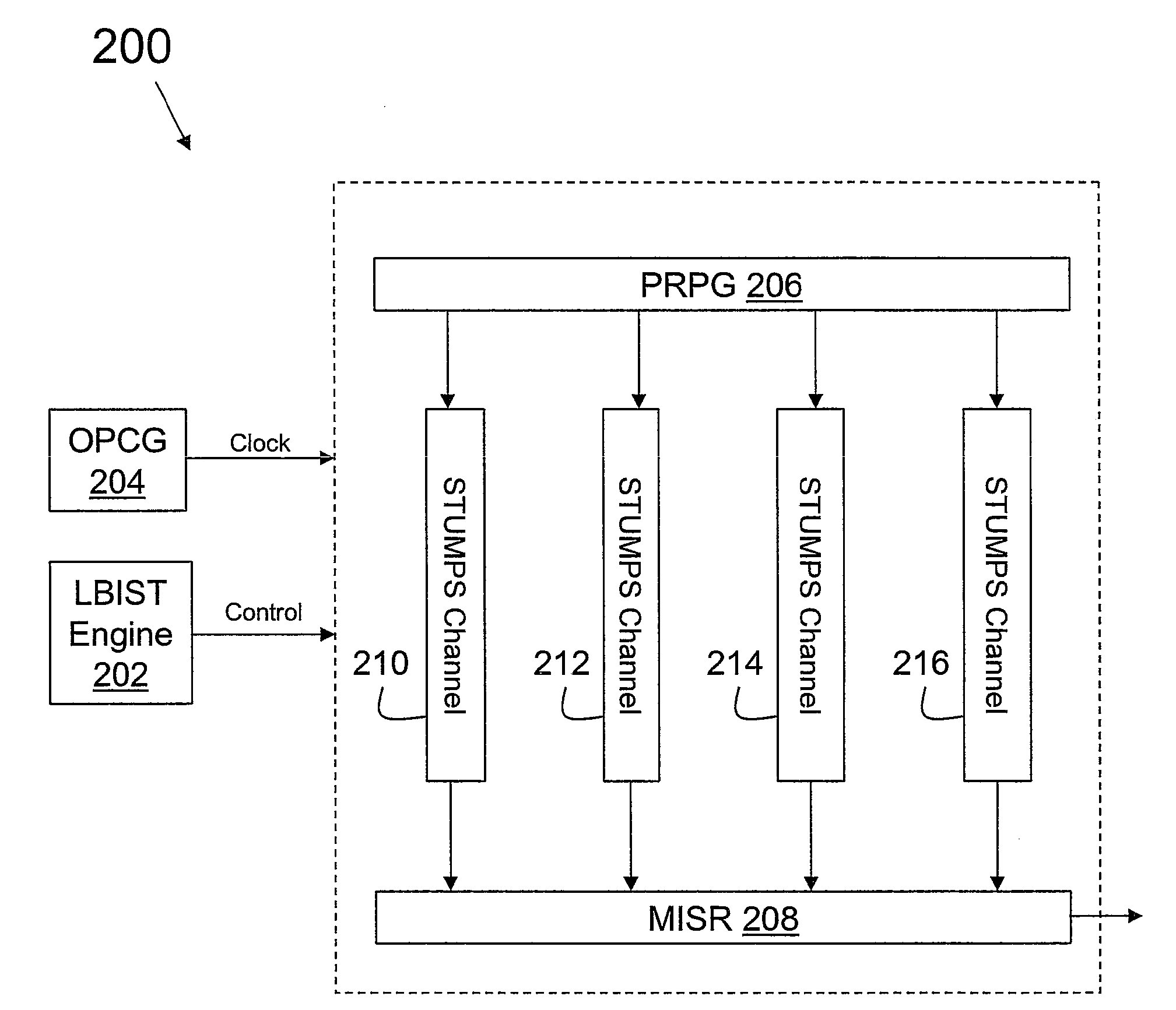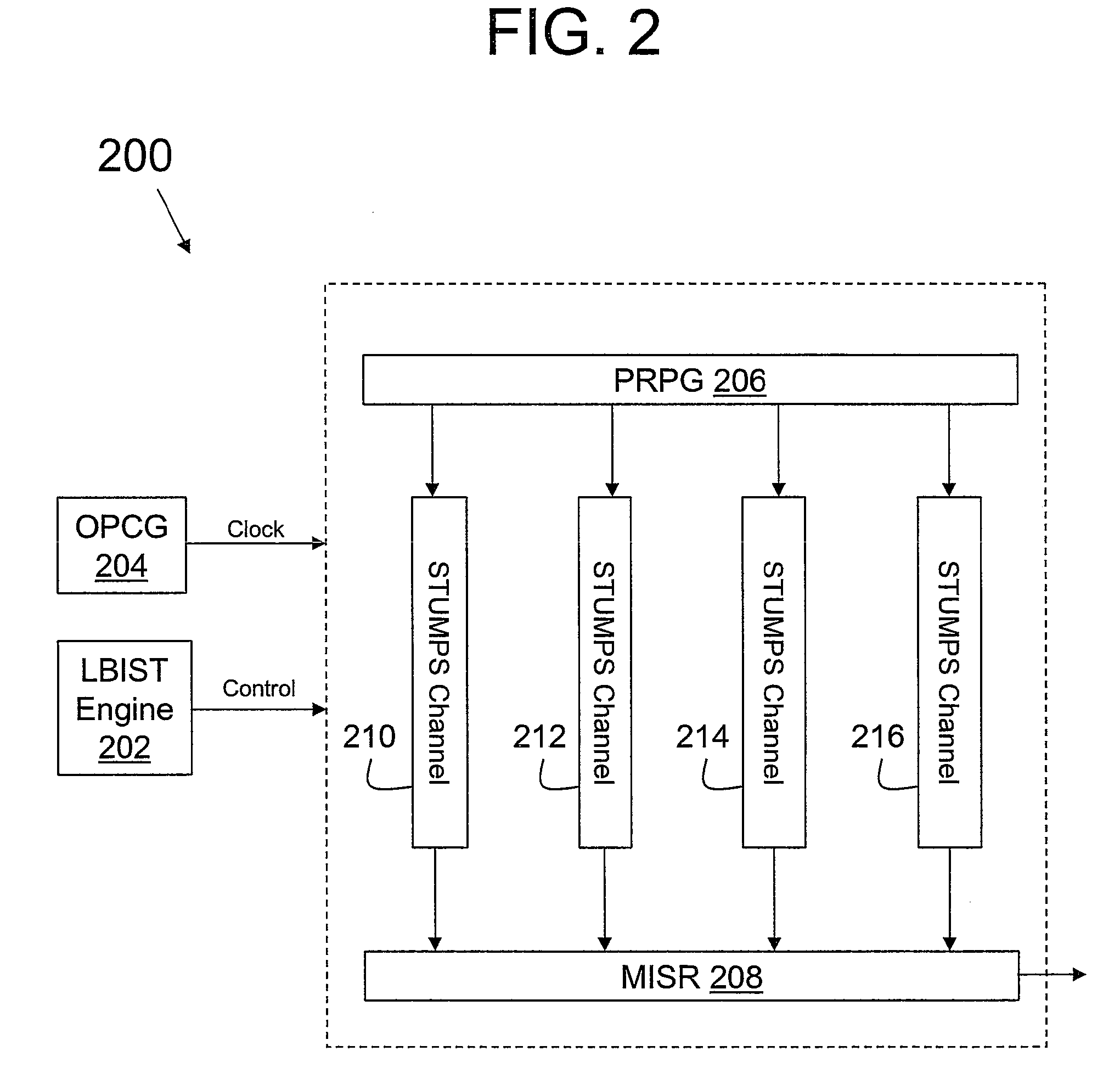Method and apparatus for performing logic built-in self-testing of an integrated circuit
a logic and integrated circuit technology, applied in the field of logic built-in self-testing of integrated circuits, can solve the problems of not providing a means to adequately detect all of the internal defects of the device, testers cannot know if the lbist dft logic or the functional logic of the device-under-test is faulty, and unnecessary lssd test application protocols
- Summary
- Abstract
- Description
- Claims
- Application Information
AI Technical Summary
Problems solved by technology
Method used
Image
Examples
Embodiment Construction
[0015]With reference now to the drawings, and in particular to FIG. 1, there is illustrated a block diagram of integrated circuit 100 including design-for-test (DFT) logic in which a preferred embodiment of the present invention may be incorporated. Within integrated circuit 100, DFT logic is implemented in a level-sensitive scan design (LSSD). Most of the storage elements of the device, such as latches or registers, are concatenated into one or more of scan chains, such as scan chain 112. Other storage elements that are not part of the scan chains, including memory or other special macros, are isolated and tested independently. Combinational logic 102-106 is internally connected to the storage elements of scan chain 112. When integrated circuit 100 is operating in functional mode, signals applied at primary inputs (PIs) 120 are processed and output at primary outputs 122. Scan chain 112 can be accessed externally via serial input 124 and serial output 126. LSSD thereby ensures that...
PUM
 Login to View More
Login to View More Abstract
Description
Claims
Application Information
 Login to View More
Login to View More - R&D
- Intellectual Property
- Life Sciences
- Materials
- Tech Scout
- Unparalleled Data Quality
- Higher Quality Content
- 60% Fewer Hallucinations
Browse by: Latest US Patents, China's latest patents, Technical Efficacy Thesaurus, Application Domain, Technology Topic, Popular Technical Reports.
© 2025 PatSnap. All rights reserved.Legal|Privacy policy|Modern Slavery Act Transparency Statement|Sitemap|About US| Contact US: help@patsnap.com



